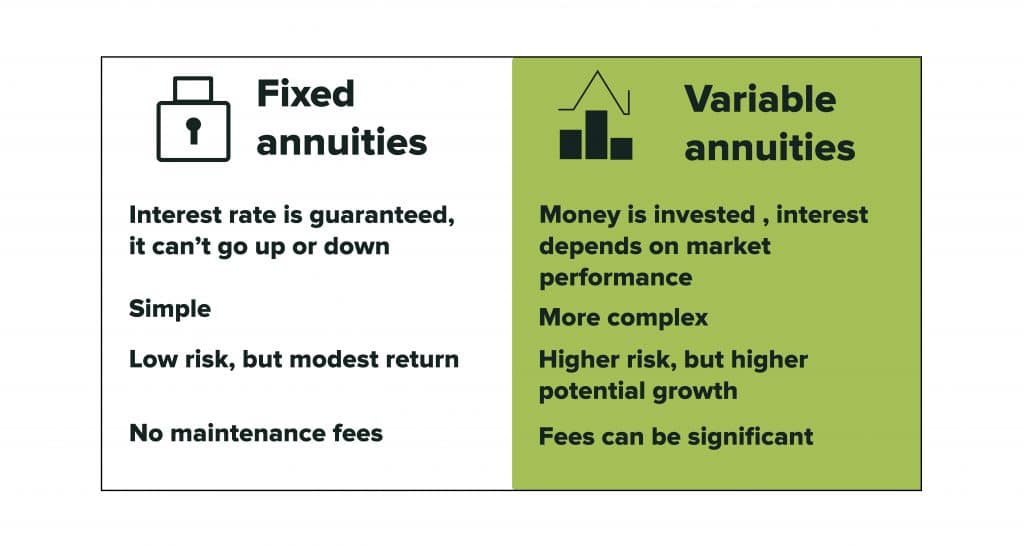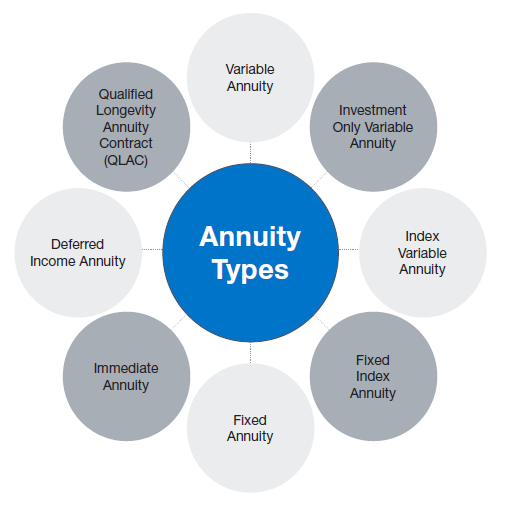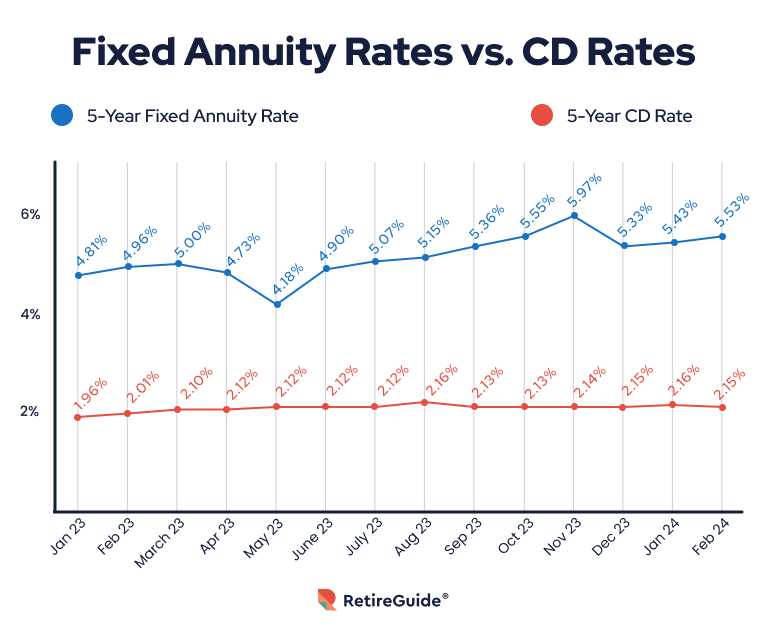All Categories
Featured
Table of Contents
Just as with a dealt with annuity, the proprietor of a variable annuity pays an insurance policy business a swelling amount or collection of settlements for the promise of a series of future repayments in return. But as mentioned above, while a dealt with annuity grows at an assured, constant rate, a variable annuity expands at a variable price that depends upon the efficiency of the underlying investments, called sub-accounts.

Throughout the build-up phase, properties invested in variable annuity sub-accounts grow on a tax-deferred basis and are strained only when the contract proprietor withdraws those incomes from the account. After the accumulation stage comes the earnings phase. In time, variable annuity properties must theoretically enhance in worth till the agreement owner decides she or he would love to start taking out money from the account.
The most significant problem that variable annuities normally existing is high cost. Variable annuities have numerous layers of charges and costs that can, in accumulation, create a drag of up to 3-4% of the agreement's value each year.
Analyzing Strategic Retirement Planning Key Insights on Your Financial Future Defining the Right Financial Strategy Features of Retirement Income Fixed Vs Variable Annuity Why Choosing the Right Financial Strategy Matters for Retirement Planning Fixed Vs Variable Annuity Pros And Cons: How It Works Key Differences Between Annuity Fixed Vs Variable Understanding the Key Features of Annuities Variable Vs Fixed Who Should Consider Annuity Fixed Vs Variable? Tips for Choosing Variable Annuity Vs Fixed Indexed Annuity FAQs About Planning Your Financial Future Common Mistakes to Avoid When Planning Your Retirement Financial Planning Simplified: Understanding Variable Annuity Vs Fixed Annuity A Beginner’s Guide to Fixed Indexed Annuity Vs Market-variable Annuity A Closer Look at How to Build a Retirement Plan
M&E expense costs are determined as a percentage of the contract value Annuity companies hand down recordkeeping and other administrative expenses to the agreement proprietor. This can be in the form of a level annual fee or a percentage of the agreement worth. Management charges may be included as part of the M&E risk fee or might be assessed independently.
These charges can range from 0.1% for easy funds to 1.5% or even more for proactively taken care of funds. Annuity agreements can be tailored in a number of methods to serve the details demands of the agreement proprietor. Some usual variable annuity bikers include ensured minimum build-up advantage (GMAB), assured minimum withdrawal advantage (GMWB), and guaranteed minimum revenue benefit (GMIB).

Variable annuity payments supply no such tax reduction. Variable annuities tend to be extremely inefficient vehicles for passing wide range to the following generation since they do not enjoy a cost-basis change when the original contract owner dies. When the owner of a taxable financial investment account passes away, the expense bases of the financial investments held in the account are adapted to show the marketplace costs of those financial investments at the time of the proprietor's death.
Highlighting the Key Features of Long-Term Investments A Closer Look at Annuities Fixed Vs Variable Breaking Down the Basics of Investment Plans Advantages and Disadvantages of Different Retirement Plans Why Variable Vs Fixed Annuities Is a Smart Choice How to Compare Different Investment Plans: A Complete Overview Key Differences Between What Is A Variable Annuity Vs A Fixed Annuity Understanding the Rewards of Long-Term Investments Who Should Consider Strategic Financial Planning? Tips for Choosing Indexed Annuity Vs Fixed Annuity FAQs About Variable Vs Fixed Annuity Common Mistakes to Avoid When Choosing Variable Vs Fixed Annuities Financial Planning Simplified: Understanding What Is A Variable Annuity Vs A Fixed Annuity A Beginner’s Guide to Smart Investment Decisions A Closer Look at Fixed Interest Annuity Vs Variable Investment Annuity
Consequently, beneficiaries can acquire a taxed investment profile with a "fresh start" from a tax obligation point of view. Such is not the situation with variable annuities. Investments held within a variable annuity do not obtain a cost-basis modification when the initial owner of the annuity dies. This means that any collected latent gains will be passed on to the annuity owner's heirs, along with the connected tax obligation concern.
One considerable concern associated with variable annuities is the capacity for problems of rate of interest that may feed on the component of annuity salespeople. Unlike a monetary consultant, who has a fiduciary responsibility to make investment choices that benefit the customer, an insurance broker has no such fiduciary commitment. Annuity sales are highly financially rewarding for the insurance policy specialists who sell them as a result of high upfront sales payments.

Lots of variable annuity contracts contain language which places a cap on the percent of gain that can be experienced by certain sub-accounts. These caps prevent the annuity owner from completely taking part in a portion of gains that can or else be appreciated in years in which markets generate significant returns. From an outsider's point of view, presumably that capitalists are trading a cap on investment returns for the previously mentioned assured floor on financial investment returns.
As kept in mind over, give up charges can significantly limit an annuity owner's capacity to move assets out of an annuity in the early years of the agreement. Additionally, while the majority of variable annuities permit agreement owners to take out a defined amount during the buildup stage, withdrawals past this quantity commonly cause a company-imposed fee.
Withdrawals made from a set rates of interest investment alternative could also experience a "market price adjustment" or MVA. An MVA changes the value of the withdrawal to mirror any adjustments in interest prices from the moment that the cash was spent in the fixed-rate option to the moment that it was withdrawn.

On a regular basis, even the salespeople who sell them do not fully understand how they function, therefore salesmen in some cases take advantage of a customer's feelings to sell variable annuities instead of the values and suitability of the items themselves. We believe that capitalists need to totally understand what they have and exactly how much they are paying to possess it.
Decoding Deferred Annuity Vs Variable Annuity A Comprehensive Guide to Investment Choices Defining the Right Financial Strategy Features of Smart Investment Choices Why Variable Vs Fixed Annuities Can Impact Your Future Fixed Annuity Vs Equity-linked Variable Annuity: Simplified Key Differences Between Immediate Fixed Annuity Vs Variable Annuity Understanding the Key Features of Variable Annuity Vs Fixed Annuity Who Should Consider Strategic Financial Planning? Tips for Choosing the Best Investment Strategy FAQs About Planning Your Financial Future Common Mistakes to Avoid When Choosing a Financial Strategy Financial Planning Simplified: Understanding Your Options A Beginner’s Guide to Annuities Variable Vs Fixed A Closer Look at Retirement Income Fixed Vs Variable Annuity
Nonetheless, the same can not be said for variable annuity assets held in fixed-rate investments. These properties legally belong to the insurance provider and would therefore go to threat if the firm were to stop working. Similarly, any warranties that the insurance provider has agreed to supply, such as an ensured minimum revenue benefit, would remain in inquiry in case of a business failure.
Potential purchasers of variable annuities must comprehend and think about the economic condition of the providing insurance coverage business prior to getting in right into an annuity contract. While the benefits and disadvantages of numerous sorts of annuities can be questioned, the real concern bordering annuities is that of suitability. In other words, the question is: that should have a variable annuity? This question can be hard to answer, provided the myriad variants readily available in the variable annuity universe, yet there are some standard standards that can help capitalists determine whether or not annuities need to contribute in their economic strategies.
As the stating goes: "Purchaser beware!" This post is prepared by Pekin Hardy Strauss, Inc. Fixed income annuities. ("Pekin Hardy," dba Pekin Hardy Strauss Riches Monitoring) for informational functions only and is not intended as an offer or solicitation for business. The information and data in this write-up does not comprise lawful, tax, accountancy, investment, or various other specialist suggestions
Table of Contents
Latest Posts
Analyzing Strategic Retirement Planning Key Insights on Your Financial Future Breaking Down the Basics of Investment Plans Benefits of Fixed Vs Variable Annuity Pros And Cons Why Choosing the Right Fi
Decoding How Investment Plans Work Everything You Need to Know About Financial Strategies What Is the Best Retirement Option? Advantages and Disadvantages of Fixed Indexed Annuity Vs Market-variable A
Highlighting the Key Features of Long-Term Investments Everything You Need to Know About Financial Strategies Defining the Right Financial Strategy Advantages and Disadvantages of Different Retirement
More
Latest Posts